San Diego is home to many different kinds of animals and has a population of hawks known for their ability to fly. They are also strong birds capable of hunting other animals on prey grounds in the country. If you are a bird watcher, nature lover, or just like the way these great flying creatures look, knowing the top 10 hawks in San Diego will help you enjoy this region’s natural beauty even more.
Top 10 Hawks in San Diego

1. Red-tailed Hawk (Buteo jamaicensis)
Identification and Characteristics
A widely recognized bird of prey throughout North America is the Red-tailed Hawk. Typically, this big raptor measures about 18-26 inches long, with wingspans ranging from 43-57 inches. Adult red-tails can be easily distinguished by their reddish-brown tail feathers, most visible when flying. Their plumage is usually brown on top and lighter underneath, with a belly band that often has streaks of color. On the other hand, young red-tails do not have a red tail but exhibit a more mottled appearance.
Habitat and Behavior
Red-tailed Hawks occur in various habitats, including open fields, deserts, forests, and cities. They perch on power poles or soar at high altitudes, using their sharp eyesight to spot prey below them. These birds feed largely on small mammals, but they also hunt reptiles, insects, and birds. The Red-tail calls out loudly with its raspy “kee-me-arr” voice while soaring above lonely landscapes alone, though, during the breeding season, it may be seen as pairs.
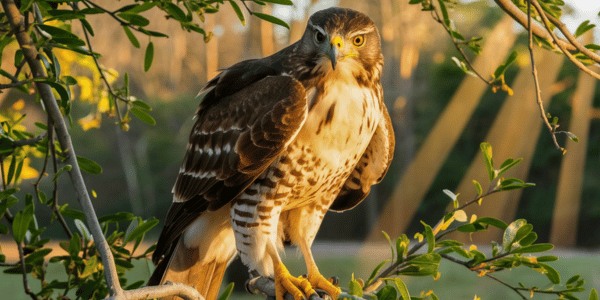
2. Cooper’s Hawk (Accipiter cooperii)
Identification and Characteristics
Cooper’s Hawks are medium-sized hawks measuring 14 – 20 inches long and 24 – 39 inches wingspans. They have streamlined bodies, round wings, and long tails banded across. Adult Cooper’s are blue-gray above and red-brown beneath the barring, while immatures are brown over and streaked on the breast. They have yellow eyes that appear to be very mean.
Habitat and Behavior
These hawks are found in forests, woodlands, and even suburbs, where they can prey on smaller mammals or birds. For instance, they move nimbly through thickets to capture prey because they are agile fliers. Often times we only hear them before seeing them as they say “cak-cak-cak” quickly. Solitary outside the breeding season, building large stick nests high in trees.
You May Also Like: The Truth About When Bald Eagles Achieve White Heads
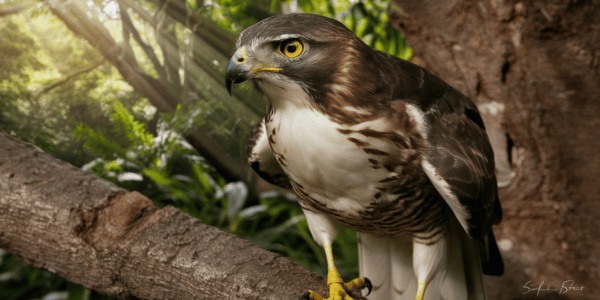
3. Sharp-shinned Hawk (Accipiter striatus)
Identification and Characteristics
A small hawk in North America is the Sharp-shinned Hawk, which measures about 9-13 inches long and has wing spans of approximately 17-22 inches. It has a tiny body with short, rounded wings and a long, squarely-tipped tail. Adults have bluish-gray upperparts and chest reddish-orange bars, whereas juveniles are brown and streaked below. The ease with which these small birds fly makes them good at hunting.
Habitat and Behavior
They usually inhabit dense woods and forests where they ambush small birds while flying over them. For example, in Europe, different species of this bird may also be seen among bushes along the forest stream as well as on the lawn by the house near Lake Rapojärvi pond, so much preferring solitude other than its really shrill “kik-kik-kik” sound produced when it wants to be silent around its people during migration these would flock sometimes called kettles

4. Swainson’s Hawk (Buteo swainsoni)
Identification and Characteristics
Swainson’s hawk is a medium-sized raptor with measurements of 18-22 inches in length and wingspan ranging from 46-54 inches. It has long, slim wings and a short, wide tail. Adults are generally light colored with dark brown chest and head contrasting with lighter bases. Some show a darker morph with uniformly more brown feathers. Their most important phenotypic trait is migration.
Habitat and Behavior
Swainson’s Hawks can be found in open grasslands, prairies, and agricultural fields, where they mostly feed on insects, especially during the breeding season. They have remarkable long distance migrations travelling from North America to South America every year. These hawks often soar really high up into the sky to scout for prey before flying down to catch them in one swift downward dive toward their target. These birds are gregarious while migrating, forming large flocks that move together.
You May Also Like: Small Southwestern Birds of Prey

5. Northern Harrier (Circus hudsonius)
Identification and Characteristics
The northern harrier is a distinctive raptor due to its owl-like face and long wings and tail. It can grow between 16 and 20 inches long and has a wing span of 38 to 48 inches. Males are usually gray with white underparts, while females have brown upper parts streaked below; all these sexes have visible white rump patches when they are in flight.
Habitat and Behavior
These birds prefer open country habitats such as marshes, fields, or grasslands. They fly low over the ground, using their keen senses of sight and hearing to detect prey, including small mammals or birds. Unlike most hawks, Red-tailed Hawks build their nests on the ground, typically in dense vegetation. They may be solitary hunters, but sometimes, during migration, we see them flying together loosely.
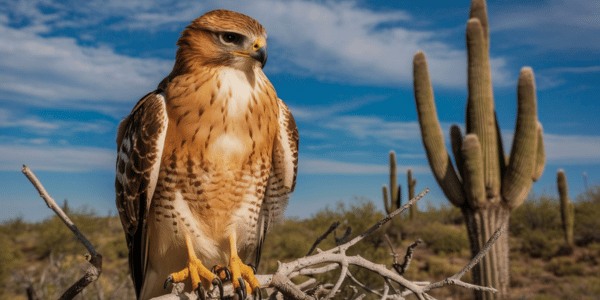
6. Ferruginous Hawk (Buteo regalis)
Identification and Characteristics
The Ferruginous hawk is characterized by their distinct rusty or ferruginous legs, shoulders and back that contrast with the white underparts. Their large wings and broad dimensions further stamped an impressive look on them. It is the largest raptor in North America and is 22-27 inches long with a wingspan of 52-60 inches.
Habitat and Behavior
They mostly inhabit open habitats like prairies, deserts, and grasslands. Since small mammals, especially prairie dogs, make up a substantial portion of their diet, they prefer small mammals to be abundant in the area. Prey may be detected while perched on the ground or in low structures. This bird is known for its aerial displays during breeding season and for building big nests on cliffs or tall trees.
You May Also Like: Birds of Prey: Meet the Mighty Raptors
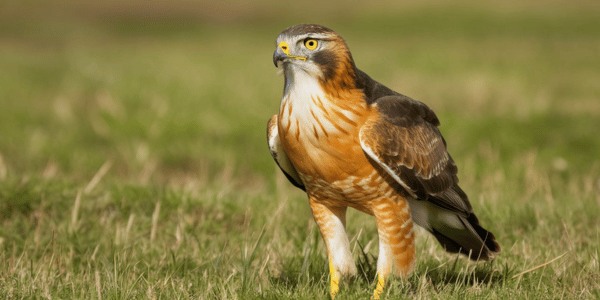
7. Red-shouldered Hawk (Buteo lineatus)
Identification and Characteristics
The red-shouldered hawk is a medium-sized raptor species that measures between 17 and 24 inches long and has a wingspan of 37 to 43 inches. It has reddish-brown shoulders, dark brown wings with white checkers, and a banded tail. The belly often has pale underparts that are barred with reddish.
Habitat and Behavior
It typically inhabits deciduous woodlands, particularly along water courses. It swoops down from a perch to capture small mammals, amphibians, and reptiles. This hawk’s loud “kee-yah” call is distinctive because it repeats itself over time. Its flight acrobatics are observed during breeding season when they become territorial. Nests are usually situated high up in trees where, year after year, they are reused most of the time.

8. Zone-tailed Hawk (Buteo albonotatus)
Identification and Characteristics
Zone-tailed Hawk a medium-sized bird of prey that measures 17-22 inches long with wingspan of 43-50 inches. It is mostly black and has a diagnostic white stripe across the tail. When flying, it may be mistaken for a turkey vultures, which enable them to close in on their prey without notice.
Habitat and Behavior
Zone-tailed hawks are common in arid environments such as deserts, canyons, and mountains. They hunt soaring high into the sky, often accompanied by vultures, and then diving down to catch small mammals, birds, or reptiles. This camouflage tactic makes them successful hunters. In the non-breeding season, they build huge nests on cliffs or tall trees, where they display solitary behaviors.
You May Also Like: The 21 Ugliest Birds: Nature’s Strange Creations
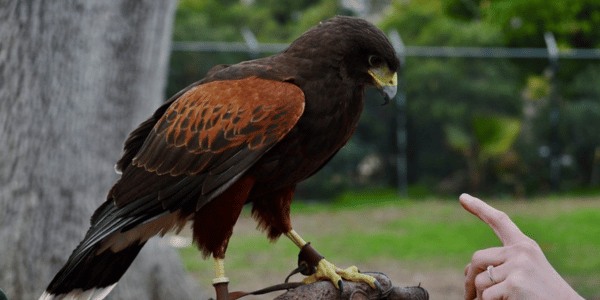
9. Harris’s Hawk (Parabuteo unicinctus)
Identification and Characteristics
A medium to large-sized raptor, Harris’s hawk measures 18-23 inches long and has a wingspan of 41-47 inches. It has dark brown plumage with chestnut shoulders, thighs, and under-wing linings.
Habitat and Behavior
Harris’s hawks are usually found in arid regions such as deserts and scrublands. One of their most outstanding features is cooperative hunting, which occurs when groups of up to six individuals hunt together to capture prey, including mammals and birds. This social behavior extends to their breeding habits, where they may nest in communal groups. They build large stick nests in tall trees or cacti while their group members use several calls for communication.
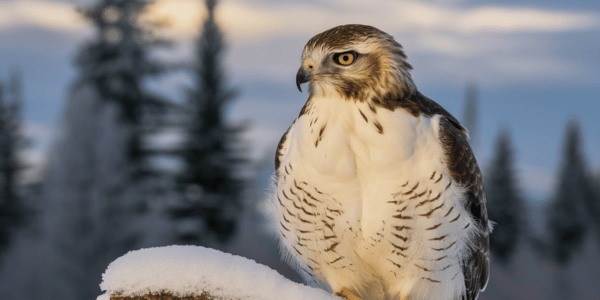
10. Rough-legged Hawk (Buteo lagopus)
Identification and Characteristics
The rough-legged hawk, a subspecies of Buteo lagopus, measures 18-24 inches long and has a wingspan of 52-54 inches. Its feathered legs insulate against cold weather environments.
Habitat and Behavior
The Arctic tundra is the nesting ground for rough-legged hawks, who migrate to open areas like prairies, marshes, and agricultural fields during the winter months. Foraging occurs mostly from the air, where they hover in one place while peering into the ground for small mammals such as voles. In flight, they display slow wing beats and a gliding nature. They are solitary hawks that perch on fence posts or other high places, watching out for prey. Their calls are high-pitched and less frequently heard than those of other hawks.
Conclusion: Appreciating San Diego’s Hawks
San Diego offers various environments that act as safe havens for many hawks, each with unique characteristics and behavior patterns. Various bird species can be seen in this region, ranging from the common red-tailed hawk to the very elusive zone-tailed hawk, which provides a window into the diverse wildlife of this area. Knowing what makes all these birds distinct will help you increase your connection with nature while assisting you in maintaining these great creatures’ existence within San Diego County.







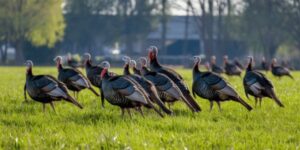

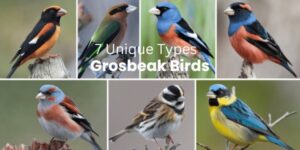
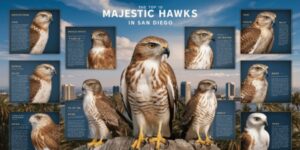

2 Responses